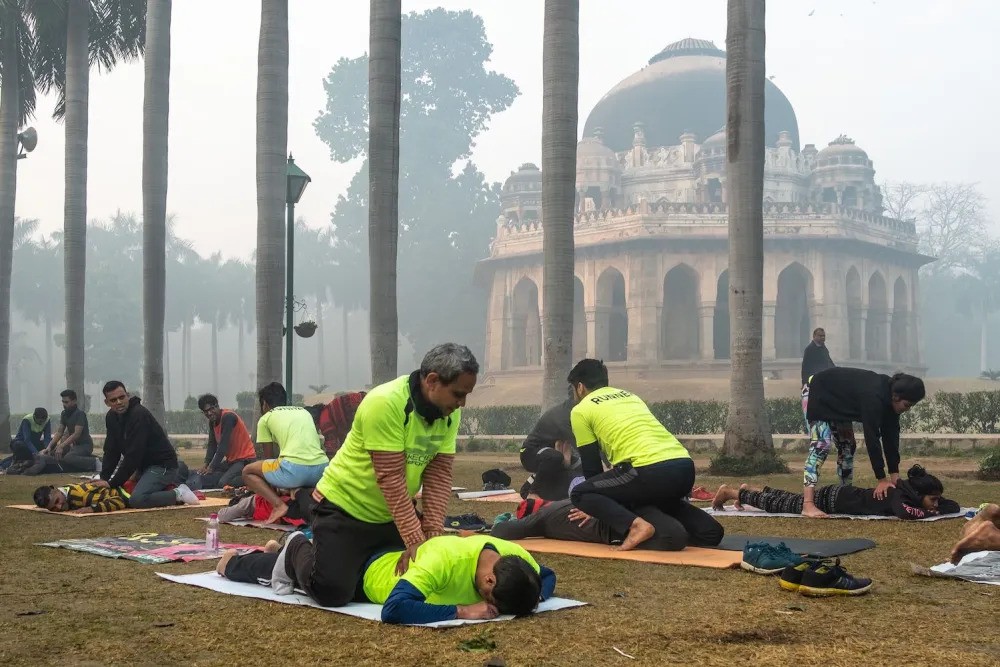- Author: Dean Spears
- Published in: Foregin Policy
- Article link
The air pollution in India is almost always bad, but in the winter it’s dire. For the last four national elections, Indians voted in late spring. Perhaps that is why national politics has seen so little attention paid to the ever-worsening air pollution. Nowhere in the world are there more deadly particles in the air than north India, where hundreds of millions of people live. But if you only listened to political campaigns and never looked to the sky or took a breath, you might miss the threat altogether.
In May, India finished its elections, returning Prime Minister Narendra Modi to power for five years with a parliamentary majority. In two ways, this election was an outlier. For one, air pollution has been unseasonably bad this spring. There were not as many particles in the air in May as there were last winter, but there were enough to qualify as an emergency—anywhere outside of Indian politics.
And yet, the other outlier is that this time, air pollution did receive a brief mention on the campaign trail. Speaking from the headquarters of Modi’s Bharatiya Janata Party (BJP) on May 9, the cabinet member Nitin Gadkari promised a rapid elimination of air pollution. “Delhi will be free of air and water pollution in the next three years,” he said. Gadkari is now the minister of road transport and highways now, but in the years before Modi first became prime minister in 2014, Gadkari was president of the BJP. He said he expected that the air would clear because of the achievements of his political party, which “has done 100 percent corruption-free, transparent, time-bound, result-oriented, and quality work.”
Bringing air pollution down to acceptable levels—not just in New Delhi, but also throughout north India—would indeed be a tremendous accomplishment. But promising to do so within three years is absurd. China, for example, has successfully directed policymaking efforts toward reducing particle pollution, after decades of catastrophic pollution in the north and public pressure once air quality data became easily available online To do so has taken China several years (more than three), has certainly not eliminated pollution altogether, and has required facing unpleasant facts. Central Chinese officials held local governments to account for improving pollution—and moved to address the problem when statistical analysis showed that local bureaucrats were manipulating the numbers. But Gadkari’s unbelievable numbers are coming from the top.
Such absurdities have become commonplace. Gadkari’s promise echoes Modi’s claim the government could eliminate open defecation from rural India by 2019. (Open defecation rates improved, but it remains dangerously common, as independent demographic data shows.) Both numerical deadlines combine wild ambition and a good cause with needless quantitative precession and the absence of any plan that could achieve the result. It is hard to say whether ludicrous claims about toilets or air particles won any votes. They certainly didn’t seem to cost Modi any. But it is clear to see that such hot air has no effect on India’s deep environmental health challenges.
I did not originally want to believe that the air pollution was such a challenge. My family has lived and worked in India for years. I’ve jogged through the haze in rural Uttar Pradesh and in Delhi’s Deer Park, telling myself, like everyone else did, that it was just fog. But the researchers whom I work with were not satisfied. They dug into the statistics, read the published literature, and matched satellite pollution measurements with the newest demographic data on child health.
The results confirmed in Indian data what numerous global studies have already confirmed: India’s air pollution is a disaster for the health of its children. Worse still, there is little you can do to protect yourself. My colleagues published a randomized experiment conducted in our own urban-elite homes to demonstrate that commercially available air filters did not help enough to make the air safe in real circumstances. I wrote my recent book—Air: Pollution, Climate Change and India’s Choice between Policy and Pretence, released last month by HarperCollins—to share what we had learned.
Unfortunately, when the Indian state talks to the voters about air pollution, it appears satisfied merely to pretend to address the problem. One recent winter, New Delhi closed a few streets and, for 13 days, only let half of its private passenger cars on the road, alternating based on license plate numbers. Statistics showed that the major consequence of this scheme was inconvenience: Air pollution numbers hardly budged. Nor would they have, when so much of the particles in the air come from burning coal, burning dung, and burning fields throughout the neighboring states. What the so-called odd-even plan did achieve was attention. In all of the hassle, Delhi’s voters could hardly overlook the apparent environmental effort.
Similarly difficult to overlook are the large, color-coded electronic signboards that the state has posted along roads traveled by the elite. One faces passengers being driven away from the international airport. Another is at the intersection between a major international conference hall and the offices of agencies such as UNICEF and the World Bank. These categorize pollution counts: green for good, yellow and red for worse. Pollution levels that the Indian state announces are green for “satisfactory” would be coded red for “high” in the U.K. and for “unhealthy” in the United States. Such official satisfaction with the status quo is evident in the fact that when the BJP came to power in Uttar Pradesh state in 2017, it acted quickly to expand the coal plant in Kanpur, which the WHO has labeled as the most air-polluted city in the world.
Air pollution was not an election issue. But even if it had been, it is likely that the election outcome would have been similar. India’s first-past-the-post parliamentary system translated the BJP’s 37 percent of the vote into 56 percent of the legislative seats. But what might have happened—but did not—was that the election could have been an opportunity for Indian voters make their leaders feel a little less comfortable with numerical nonsense.
Unfortunately, the pattern extends beyond the environment. Increasingly, many of India’s leading economists and statisticians have spoken out about the dismantling of India’s systems of official statistics and expertise. Respected statisticians—including an economist whom I know personally from my time at the Delhi School of Economics—resigned from the National Statistical Commission in January, in protest of the government’s refusal to release credible unemployment data.

